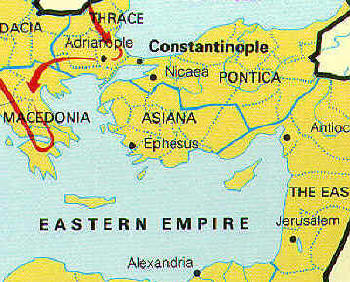We believe in one God,
the Father, the Almighty,
maker of heaven and earth,
of all that is, seen and unseen.
We believe in one Lord, Jesus Christ,
the only Son of God,
eternally begotten of the Father,
God from God, Light from Light,
true God from true God,
begotten, not made,
of one Being with the Father.
Through him all things were made.
For us and for our salvation
he came down from heaven:
by the power of the Holy Spirit
he became incarnate from the Virgin Mary,
and was made man.
For our sake he was crucified under Pontius Pilate;
he suffered death and was buried.
On the third day he rose again
in accordance with the Scriptures;
he ascended into heaven
and is seated at the right hand of the Father.
He will come again in glory to judge the living and the dead,
and his kingdom will have no end.
We believe in the Holy Spirit, the Lord, the giver of life,
who proceeds from the Father and the Son.
With the Father and the Son he is worshiped and glorified.
He has spoken through the Prophets.
We believe in one holy catholic and apostolic Church.
We acknowledge one baptism for the forgiveness of sins.
We look for the resurrection of the dead,
and the life of the world to come. Amen
Canons of the Council of Nicaea
|
We
believe in one God,
the Father, the Almighty,
maker of heaven and earth,
of all that is, seen and unseen.
We believe in
one Lord, Jesus Christ,
the only Son of God,
eternally begotten of the Father,
God from God, light from light,
true God from true God,
begotten, not made,
of one Being with the Father;
through him all things were made.
For us and for our salvation
he came down from heaven,
was incarnate of the Holy Spirit and the Virgin Mary
and became truly human.
For our sake he was crucified under Pontius Pilate;
he suffered death and was buried.
On the third day he rose again
in accordance with the Scriptures;
he ascended into heaven
and is seated at the right hand of the Father.
He will come again in glory to judge the living and the dead,
and his kingdom will have no end.
We believe in
the Holy Spirit, the Lord, the giver of life,
who proceeds from the Father [and the Son],
who with the Father and the Son is worshiped and glorified,
who has spoken through the prophets.
We believe in one holy catholic and apostolic Church.
We acknowledge one baptism for the forgiveness of sins.
We look for the resurrection of the dead,
and the life of the world to come. Amen.
|
 Four
centuries after the death of the Christ religious leaders quarreled about the meaning of
Christianity. A Bishop Arius believed that the Christ had two separate natures, one
divine and the other human. The Christ, as Son, was subordinate to the Father, a
relationship which he believed mirrored the structure of society. Arius converted many
people, including many Germanic peoples, his theological position began to reveal
divisions with more traditional views of the religion. The Emperor Constantine summoned
the first general council (or "ecumenical") of the Christian Church, the Council
of Nicaea in 325 A.D., to promote religious peace within the empire. One result was the
Nicaean Creed, written by Athanasius of Alexandria, which served to define the most basic
beliefs of Latin Christianity. The Pope, Silvester, did not attend the Council.
Constantine invited all the bishops of the Empire to attend. Very few Western
bishops came. Constantine confirmed the legislation of the Council.
Four
centuries after the death of the Christ religious leaders quarreled about the meaning of
Christianity. A Bishop Arius believed that the Christ had two separate natures, one
divine and the other human. The Christ, as Son, was subordinate to the Father, a
relationship which he believed mirrored the structure of society. Arius converted many
people, including many Germanic peoples, his theological position began to reveal
divisions with more traditional views of the religion. The Emperor Constantine summoned
the first general council (or "ecumenical") of the Christian Church, the Council
of Nicaea in 325 A.D., to promote religious peace within the empire. One result was the
Nicaean Creed, written by Athanasius of Alexandria, which served to define the most basic
beliefs of Latin Christianity. The Pope, Silvester, did not attend the Council.
Constantine invited all the bishops of the Empire to attend. Very few Western
bishops came. Constantine confirmed the legislation of the Council.